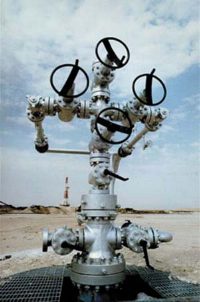Middle East: Kuwait
August 2000 Vol. 221 No. 8 International Outlook MIDDLE EAST Dr. A. F. Alhajji, Contributing Editor Kuwait The recent explosion at Mina al-Ahmadi oil re
MIDDLE EASTDr. A. F. Alhajji, Contributing Editor KuwaitThe recent explosion at Mina al-Ahmadi oil refinery dampened the joy brought by increased oil revenues and 2.1% economic growth. Damage at the refinery was estimated to be about $330 million, and international contractors were lining up for big repair contracts. Last August, the Supreme Petroleum Council (SPC) was reconstituted. It includes six cabinet members, the central bank governor and nine non-governmental members. SPC will oversee oil policy and negotiate with foreign firms. Kuwait resolved the Saudi Arabian part of its dispute over an offshore gas / condensate field, but the emirate is still negotiating with Iran. Kuwait did convince Iran to stop exploring the area.
Drilling/development. Last year, wells drilled wells increased to 99 after falling 20% during 1998. That number should increase 3% this year, because of higher rig activity in Kuwait. Santa Fe International Corp. was operating 11 rigs in 1999, plus two additional rigs in the Neutral Zone. Recently, Kuwait contracted Royal Dutch / Shell to conduct seismic surveys of its offshore fields. Last July, Kuwait Oil Co. said that it will spend $650 million to raise Kuwaiti export capacity to 3 million bopd during the next 3 years. Delays in the construction of gathering centers 27 in Umm Gudair (total capacity, 190,000 bpd) and 28 in Minagish (total capacity, 220,000 bpd) still hamper efforts to increase Kuwait’s productive capacity. The gathering centers’ construction was slated to finish three years ago, but China National Petroleum Engineering Construction Corp. was unable to finish them on time. It is expected that gathering center 27 will complete in December 2000, and center 28 will finish in February 2001. Late last year, Kuwait invited bids for expansion of gathering center 23 in Sabria field. According to Middle East Economic Survey, the project will raise the center’s capacity to about 200,000 bpd from 16,000 bpd. A separate plan to raise Kuwaiti productive capacity by 2005 through PSAs with foreign oil companies is on hold, pending results of various technical studies and parliamentary approval, which will set the legal framework for such participation. Foreign oil companies will participate in operating service agreements, to boost output in five northern and western fields. Capacity will grow to 900,000 bopd from 400,000 bopd by 2005. Kuwait set three conditions that make these projects less attractive to foreign firms: 1) They will develop only proven reserves and not explore for new deposits; 2) Their role is to offer services or work as contractors, not function as producers; and 3) Foreign firms will finance the development process.
Production. Kuwait produced 1.6 million bopd in 1999, exclusive of its
50% share (275,000 bopd) of the Neutral Zone (N.Z.). Most of this oil was exported to Asia. Kuwait’s
output quota under the latest OPEC agreement increased to 2.037 million bopd (including N.Z. output) from the
previous 1.98 million bopd. In recent months, Kuwait produced 1.83 million bopd (without N.Z. output). Kuwaiti
productive capacity is estimated at 2.23 million bopd (exclusive of N.Z.).
|
- Applying ultra-deep LWD resistivity technology successfully in a SAGD operation (May 2019)
- Adoption of wireless intelligent completions advances (May 2019)
- Majors double down as takeaway crunch eases (April 2019)
- What’s new in well logging and formation evaluation (April 2019)
- Qualification of a 20,000-psi subsea BOP: A collaborative approach (February 2019)
- ConocoPhillips’ Greg Leveille sees rapid trajectory of technical advancement continuing (February 2019)




